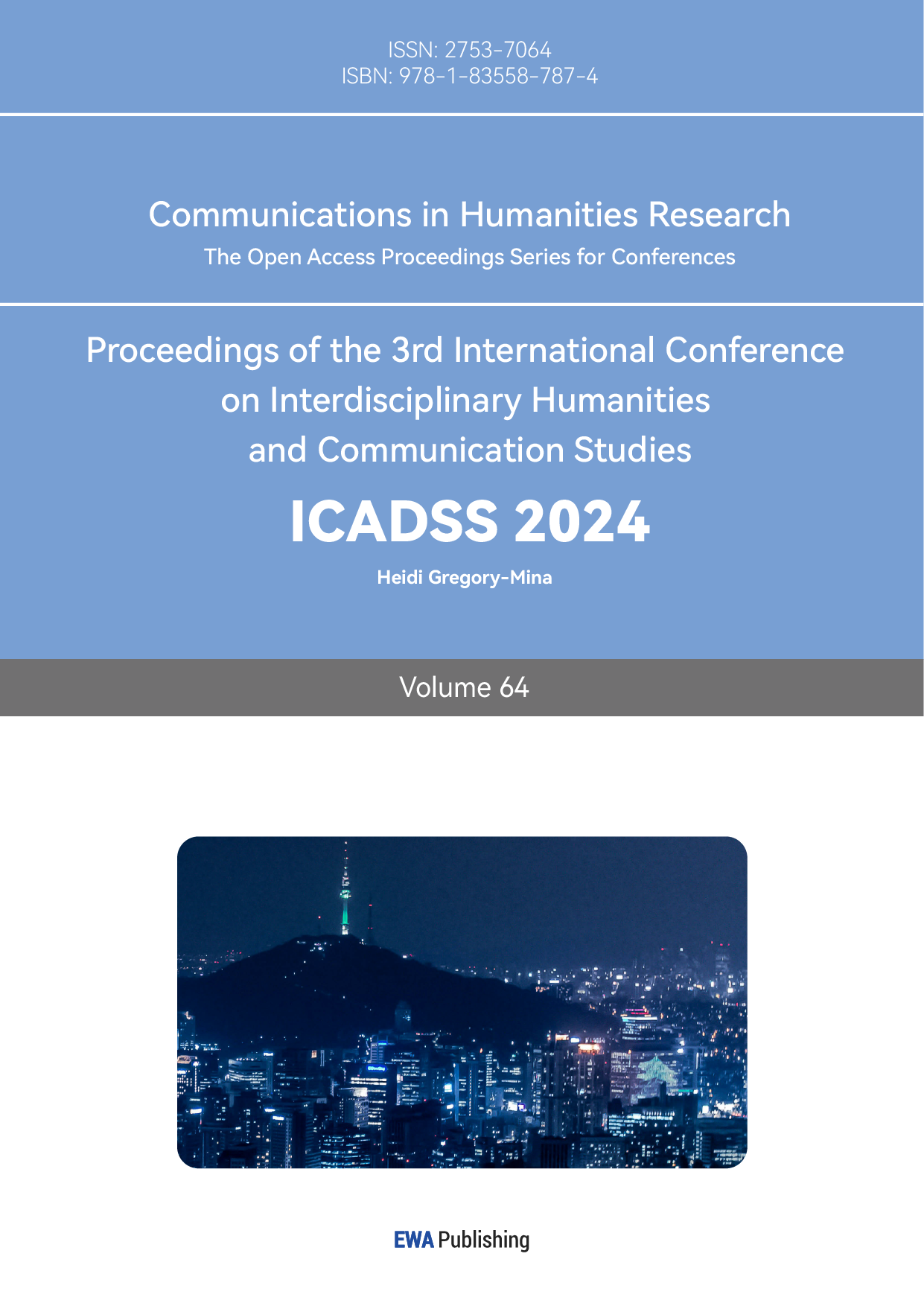1. Introduction
With the advent of the artificial intelligence era centered around computer technology, the growth of information has propelled the rapid rise of the large-scale data processing industry, which has become an irreversible trend. Digital research methods derived from computer technology, including image recognition, data visualization, document processing, text analysis, and three-dimensional graphic construction, have greatly promoted innovation and progress in the humanities in terms of data organization. To a certain extent, computer technology has "influenced and even changed the research content, research methods, and research thinking of literary researchers.[1]"
Although the study of commentaries on "Strange Tales from a Chinese Studio" is not a prominent field, it has a long-standing accumulation and involves many aspects, including the commentators, the content of the commentaries, the thought processes behind the commentaries, the theory of commentary, and the reception of the commentaries. The author takes the current state of research on the commentaries of "Strange Tales from a Chinese Studio" as a case study and employs VOSviewer and CiteSpace, two visualization analysis tools, for exploration. By applying these tools to specific research topics, the accuracy is assessed, and based on this, the strengths and limitations are analyzed. Building on this foundation, the challenges faced by literary research in the context of the digital intelligence era are proposed, and attempts are made to suggest solutions.
2. Visualizing the Research Status of 'Strange Tales from a Chinese Studio' Commentaries with Analytical Tools
From a historical perspective, the commentaries on "Strange Tales from a Chinese Studio" have attracted the attention of researchers almost since their inception, with these records and judgments primarily preserved in the prefaces, postscripts, inscriptions, and related notes and poems of various Qing dynasty editions. For instance, in his "Random Notes from the Spring Hall," Yu Yue of the Qing dynasty expressed his opinion on Ji Yun's commentary on "Strange Tales from a Chinese Studio," stating that it was "the pen of a talented scholar, not the pen of an author," and that its style "retains the ancient elegance without losing its ornate beauty.[2]" From the perspective of modern academic history, the study of commentaries on "Strange Tales from a Chinese Studio" began in the 1980s, and the past two decades have been the most developed period in the history of research on "Liaozhai" commentaries. In this section, VOSviewer and CiteSpace visualization tools are used to conduct an analysis of the evolution of research topics based on keywords: by clustering keywords to identify key research topics in the field, and on the basis of keyword clustering, using the timeline feature to analyze the evolutionary process of "Strange Tales from a Chinese Studio" commentary research along the axis of chronological development.
During the construction of the search, the author targeted "commentaries on 'Strange Tales from a Chinese Studio'" as the key search term and utilized four representative and authoritative academic journal databases: China National Knowledge Infrastructure (CNKI), Duxiu and Wanfang, as the sources for academic journals. After conducting a comprehensive literature search, we collected 120 documents directly related to the research topic. After manual screening to exclude documents with weak relevance to the research topic and non-academic nature, a total of 85 documents were obtained as the foundation for the study. The subsequent discussion in the article will be based on this collection of 85 documents to ensure the depth and accuracy of the research. The literature search was concluded on November 15, 2024, ensuring access to the most recent academic materials and research findings.
2.1. The Temporal Distribution Characteristics of 'Strange Tales from a Chinese Studio' Commentary Research
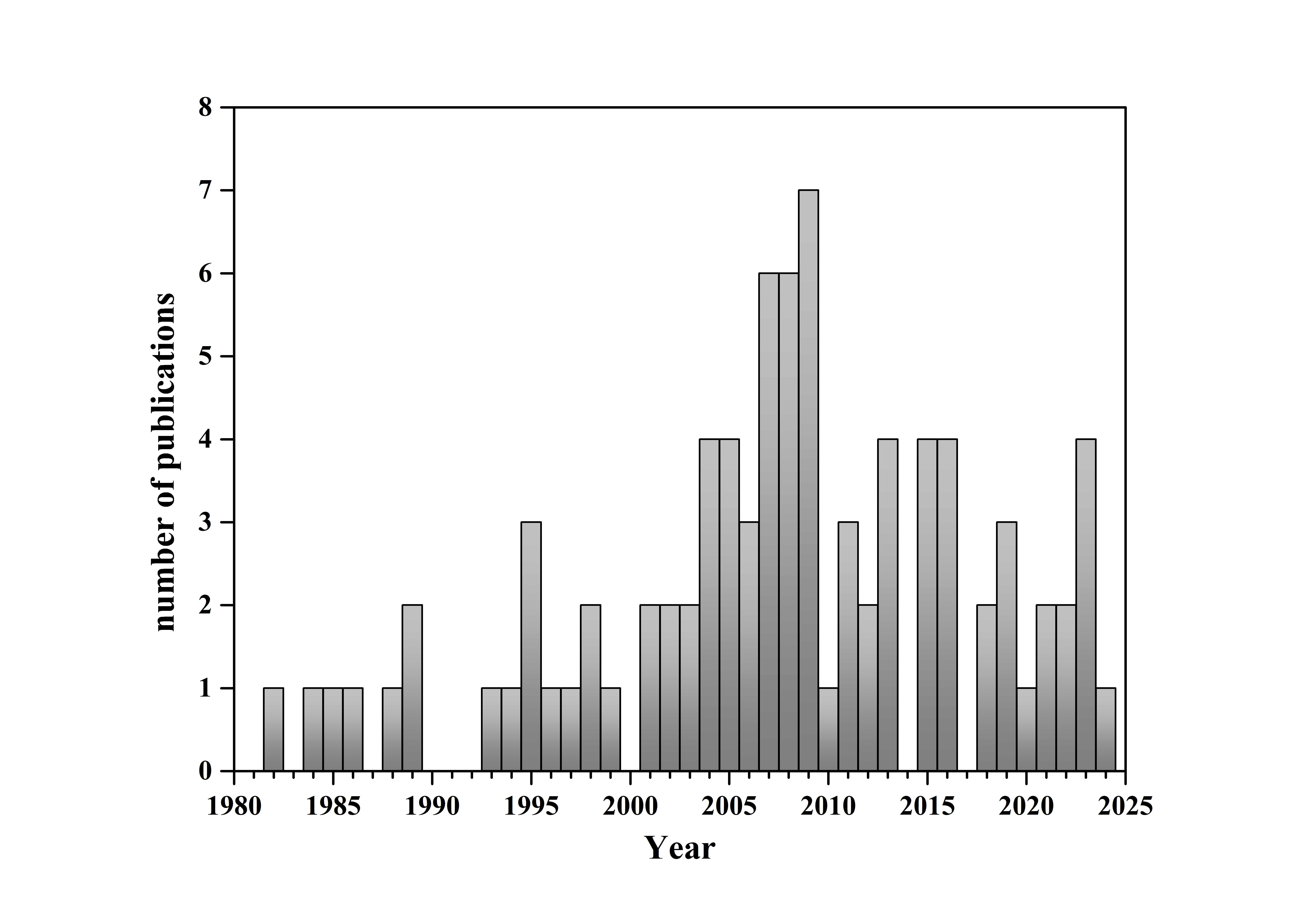
Figure 1: Annual Distribution of "Strange Tales from a Chinese Studio" Commentary Research from 1982 to 2024.
The distribution of research outcomes on the commentaries of "Strange Tales from a Chinese Studio" before November 15, 2024, is shown in Figure 1. The 1980s and 1990s marked the initial stage of research on the commentaries of "Strange Tales from a Chinese Studio." From 2001 to 2009, there was a rapid growth in research outcomes, with the peak occurring in 2009. After that, there were minor fluctuations, and after 2020, the research interest showed an upward development trend.
2.2. Hot Topics in the Study of "Strange Tales from a Chinese Studio" Commentaries
In the process of literature analysis, we utilized the VOSviewer visualization tool to extract keywords from the sample documents. By statistically analyzing the frequency of these keywords, we could understand how often they appeared in the literature. To more accurately analyze these keywords, we merged semantically identical or similar keywords (such as combining "Dan Minglun's commentary" with "Dan's commentary" and "Feng Zhenluan's commentary" with "Feng's commentary") to ensure the accuracy and consistency of the analysis. Based on the above analysis, we obtained a sample of 124 semantically independent keywords. Considering both the number of documents and the number of keywords, we selected 20 high-frequency keywords with a frequency of 2 or more to construct a keyword frequency dataset, ensuring that the dataset accurately reflects the key themes and trends in the literature.
Based on the research dataset, a distribution of hot topics in the study of commentary on "Strange Tales from a Chinese Studio" is constructed, as shown in Figure 2.
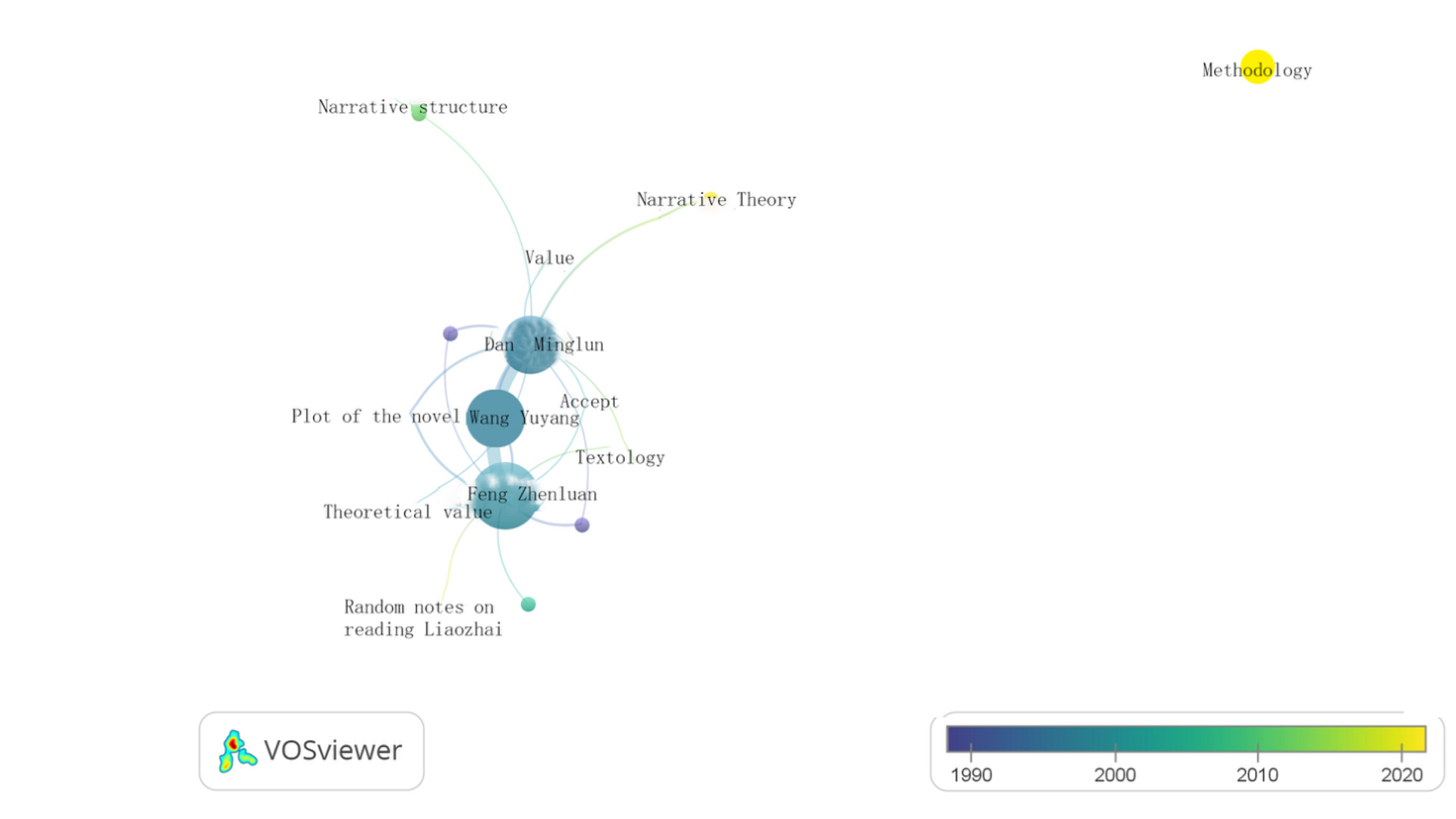
Figure 2: Knowledge Graph of Thematic Clustering in the Study of Commentary on "Strange Tales from a Chinese Studio".
The clustering results (Figure 2) indicate that from 1982 to 2024, the study of commentary on "Strange Tales from a Chinese Studio" has centered around the three commentators Dan Minglun, Feng Zhenluan, and Wang Yuyang. By elucidating and exploring the discourse and value of different commentators' perspectives on the commentary of "Strange Tales from a Chinese Studio," a comprehensive understanding of their commentary content is achieved. As presented in Figure 2, to verify the rationality of the cluster analysis, we categorized 85 research papers based on their thematic clustering results. After comparison and confirmation, 66 of these papers could be clearly assigned to the above three thematic categories, a result that suggests the thematic clustering method has considerable credibility.
In the research path centered on commentators, the main focus is on specialized discussions of individual commentators. In the study of "Strange Tales from a Chinese Studio" commentary, there are as many as 76 specialized discussions on a single commentator, accounting for seventy percent of the total number of research papers (journal articles and theses). This does not even include mentions of commentators in some chapters of monographs, and even some comprehensive studies of "Strange Tales from a Chinese Studio" commentary discuss each commentator in separate sections.
Within this research path centered on commentators, Feng Zhenluan and Dan Minglun are the primary subjects of study. On one hand, this is evident in the significantly higher number of studies on these two commentators compared to others. Researchers have conducted extensive textual criticism, reading, and appreciation of Dan's and Feng's commentaries, which account for more than 80% of the body of "Strange Tales from a Chinese Studio" commentary research. Although there may be a sense of repetition, the abundance of similar topics inevitably elevates the status of Dan Minglun and Feng Zhenluan in the commentary on "Strange Tales from a Chinese Studio." On the other hand, it is reflected in the thoroughness of their commentary research; any aspect of "Strange Tales from a Chinese Studio" commentary research that involves Dan Minglun and Feng Zhenluan's commentaries is covered.
2.3. The Evolutionary Path of "Strange Tales from a Chinese Studio" Commentary Research
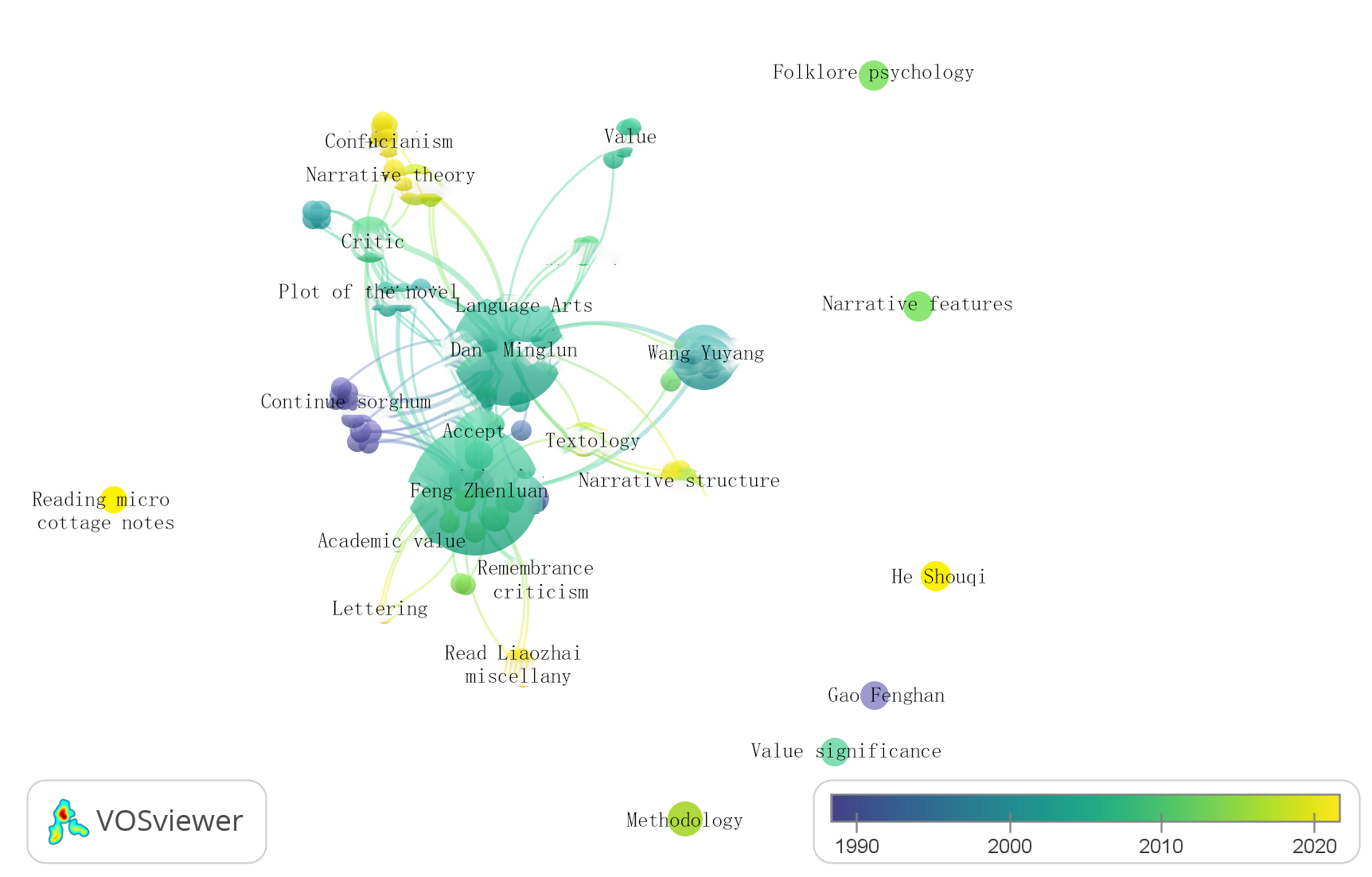
Figure 3: Constructing a Knowledge Map of Keyword Evolution Pathways Using VOSviewer.
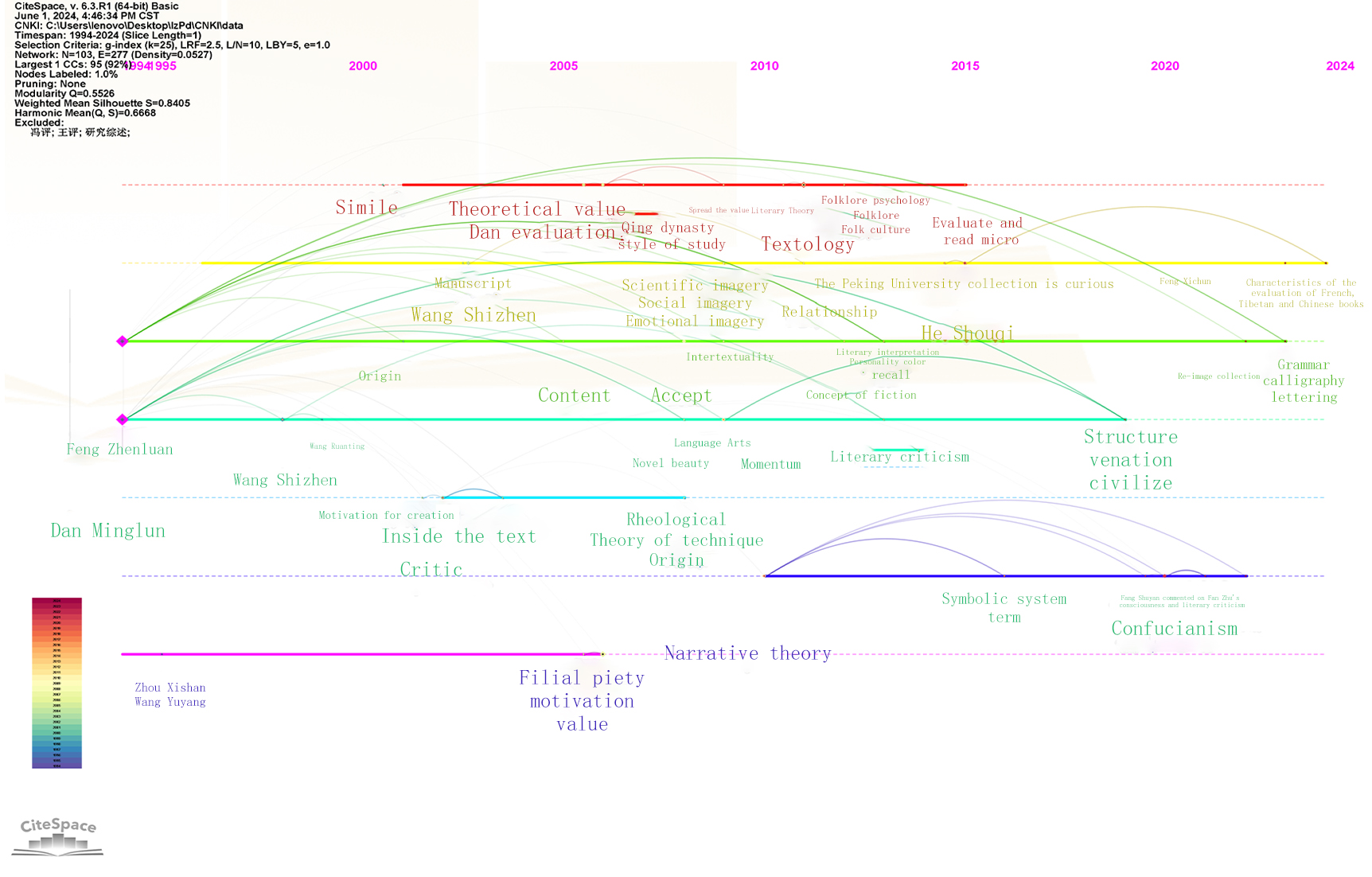
Figure 4: Constructing a Knowledge Map of Keyword Evolution Pathways Using CiteSpace.
Taking the entire lifecycle of "Strange Tales from a Chinese Studio" commentary research in our country as the research interval, VOSviewer and CiteSpace are used to construct a knowledge map of the evolution of keywords, as shown in Figures 3 and 4. The research path of "Strange Tales from a Chinese Studio" commentary, based on the color depth and corresponding years displayed in the images, can be seen to have initially centered around the two commentators, Feng Zhenluan and Dan Minglun. Subsequently, their commentary theories, methods, and thoughts were explored. As the commentary research progressed, the perspectives and patterns of "Strange Tales from a Chinese Studio" commentary gradually changed: on one hand, some rare commentators and related literature studies appeared in research works, such as He Shouqi and Fang Shuyan; on the other hand, the commentary of "Strange Tales from a Chinese Studio" was explored from aspects such as narrative theory, folk psychology, and Confucian thought reflected in the commentary.
Using VOSviewer and CiteSpace visualization tools to construct a knowledge map of "Strange Tales from a Chinese Studio" commentary research, this study summarizes and discusses the temporal distribution of research outcomes, the distribution of hot topics, and the evolutionary path in the field of "Strange Tales from a Chinese Studio" commentary research. Based on the actual situation of "Strange Tales from a Chinese Studio" commentary research, the author believes that VOSviewer and CiteSpace can correctly reflect the current state of research. However, their drawbacks are also quite apparent. As two powerful tools for literature analysis and visualization, VOSviewer and CiteSpace do not possess the ability to think and judge independently, nor can they deeply understand and interpret the literature data. This is because the algorithms, as a method of explanation, aim to "replace some simple, mechanical, repetitive, and non-creative labor.[3]"On the contrary, they rely more on the researchers' own professional knowledge and experience to interpret and analyze the data. In the study of "Strange Tales from a Chinese Studio" commentaries, why has a situation centered on Feng's and Dan's commentaries been formed, why did the research peak occur in 2009, and what is the connection with the academic community's attention to "Strange Tales from a Chinese Studio" at that time? We cannot know these things through the display of charts. To reveal the underlying causes and mechanisms, scholars in the relevant fields are needed to interpret the reasons behind them.
3. Conclusion
Against the backdrop of the digital and intelligent era, as data infrastructure continues to be optimized and digital technology develops rapidly, traditional humanities are undergoing a profound modern transformation. Whether viewed from the perspective of data, technology, or application scenarios, "digital intelligence empowerment" has deeply affected the research paradigms and practical logic of the humanities[4]. The author takes the study of commentaries on "Strange Tales from a Chinese Studio" as an example, applying digital intelligence technology for analysis and comparing it with the actual research situation, which allows us to perceive the advantages and barriers that the use of digital intelligence technology brings to the humanities. In terms of its advantages, data visualization technology can help researchers present their findings intuitively, making literary research more vivid and understandable, but it inevitably leads to some issues. This is mainly manifested in two aspects:
1. The gap between the demand for digital tools among humanities scholars and their actual operational skills. Against the backdrop of the development of emerging academic environments, the demand for computer technology, such as data acquisition, among humanities scholars has become increasingly urgent, and the number of digital humanities infrastructures has correspondingly increased. These tools include, but are not limited to, text analysis software, database management platforms, online archival systems, and various data visualization tools. The introduction of these tools aims to help scholars more efficiently acquire data, analyze information, and achieve deeper insights in academic research. Although digital tools have provided new avenues and methods for research in literature and other humanities disciplines, "most humanities researchers feel unfamiliar and find difficulty with data-driven research methods.[5]" The effective use of these tools requires researchers to overcome technological barriers and master relevant technical knowledge. For instance, text mining technology can help researchers quickly extract key information from large amounts of text, but to proficiently use this technology, researchers need to understand the basic principles and methods of natural language processing. Similarly, data visualization tools can help researchers present complex data in a graphical manner, but this also requires researchers to have certain data analysis and graphic design skills. The development and application of digital tools require interdisciplinary knowledge and skills. They may need to collaborate with experts such as computer scientists and data analysts to jointly develop digital tools and methods suitable for literary research. Such interdisciplinary collaboration can not only improve the quality and efficiency of research but also promote the development and innovation of digital humanities.
2. The contradiction between researchers' expectations for digital academic tools and their limitations. The application of digital technology has opened up new perspectives and methods for literary research, allowing works of literature that were once difficult to quantify to be analyzed through data-driven approaches. For example, through text mining technology, researchers can quickly identify themes, emotional tendencies, and language styles in literary works. With the help of visualization tools, complex textual data can be transformed into intuitive charts and graphs, assisting researchers in discovering patterns and connections within the data. However, digital technology is not a panacea; it may not be applicable or effective when dealing with certain research issues. For instance, metaphors, symbols, and deep cultural meanings in literary works cannot be parsed by algorithms. Over-reliance on technological means may lead researchers to overlook the humanistic values and aesthetic characteristics of literary works, thereby diminishing the depth and breadth of research. Therefore, when using digital tools, researchers need to consider whether the research subjects are truly suitable for visualization analysis or if they can be effectively interpreted through data-driven methods.
In the field of literary research, we can anticipate that artificial intelligence will not only change the way literary works are created but also potentially disrupt traditional models of knowledge production and dissemination. When machines are capable of generating content, the logical thinking and modes of expression they embody will undoubtedly have a subtle influence on human thought patterns. This influence could both drive literary innovation and trigger deep cognitive crises. Therefore, in the face of the literary revolution brought about by artificial intelligence, we should be delighted by technological advancements while also cautiously considering the long-term impacts they may have.
References
[1]. Zheng F. and Lu L. (2023) The Current Status, Problems, and Trends of Literary Research in the Digital Humanities Perspective. Journal of the University of Chinese Academy of Social Sciences, 5, 5-17+156.
[2]. Yu Y. (2002) Random Notes from the Spring Hall, Volume Eight, edited by Zhu Yi Xuan. Compilation of Materials on Strange Tales from a Chinese Studio, Tianjin: Nankai University Press, 505.
[3]. Zeng J. (2023) Algorithmic Interpretation: Literary Theoretical Issues in the Age of Artificial Intelligence. Journal of Huazhong Normal University (Humanities and Social Sciences), 5, 125-134.
[4]. Gao D. and He L. (2023) Digital Humanities Research under the Perspective of Digital Intelligence Empowerment: Data, Technology, and Application. Library Forum, 9, 107-119.
[5]. Liu H.T. and Long C.Y. (2024) From Close Reading to Distant Viewing: New Directions for Humanities Research in the Digital Intelligence Era. Contemporary Rhetoric, 3, 37-50.
Cite this article
Fang,J. (2025). Research on the Commentary of 'Strange Tales from a Chinese Studio' from the Perspective of Digital Humanities. Communications in Humanities Research,64,187-192.
Data availability
The datasets used and/or analyzed during the current study will be available from the authors upon reasonable request.
Disclaimer/Publisher's Note
The statements, opinions and data contained in all publications are solely those of the individual author(s) and contributor(s) and not of EWA Publishing and/or the editor(s). EWA Publishing and/or the editor(s) disclaim responsibility for any injury to people or property resulting from any ideas, methods, instructions or products referred to in the content.
About volume
Volume title: Proceedings of 3rd International Conference on Interdisciplinary Humanities and Communication Studies
© 2024 by the author(s). Licensee EWA Publishing, Oxford, UK. This article is an open access article distributed under the terms and
conditions of the Creative Commons Attribution (CC BY) license. Authors who
publish this series agree to the following terms:
1. Authors retain copyright and grant the series right of first publication with the work simultaneously licensed under a Creative Commons
Attribution License that allows others to share the work with an acknowledgment of the work's authorship and initial publication in this
series.
2. Authors are able to enter into separate, additional contractual arrangements for the non-exclusive distribution of the series's published
version of the work (e.g., post it to an institutional repository or publish it in a book), with an acknowledgment of its initial
publication in this series.
3. Authors are permitted and encouraged to post their work online (e.g., in institutional repositories or on their website) prior to and
during the submission process, as it can lead to productive exchanges, as well as earlier and greater citation of published work (See
Open access policy for details).
References
[1]. Zheng F. and Lu L. (2023) The Current Status, Problems, and Trends of Literary Research in the Digital Humanities Perspective. Journal of the University of Chinese Academy of Social Sciences, 5, 5-17+156.
[2]. Yu Y. (2002) Random Notes from the Spring Hall, Volume Eight, edited by Zhu Yi Xuan. Compilation of Materials on Strange Tales from a Chinese Studio, Tianjin: Nankai University Press, 505.
[3]. Zeng J. (2023) Algorithmic Interpretation: Literary Theoretical Issues in the Age of Artificial Intelligence. Journal of Huazhong Normal University (Humanities and Social Sciences), 5, 125-134.
[4]. Gao D. and He L. (2023) Digital Humanities Research under the Perspective of Digital Intelligence Empowerment: Data, Technology, and Application. Library Forum, 9, 107-119.
[5]. Liu H.T. and Long C.Y. (2024) From Close Reading to Distant Viewing: New Directions for Humanities Research in the Digital Intelligence Era. Contemporary Rhetoric, 3, 37-50.





